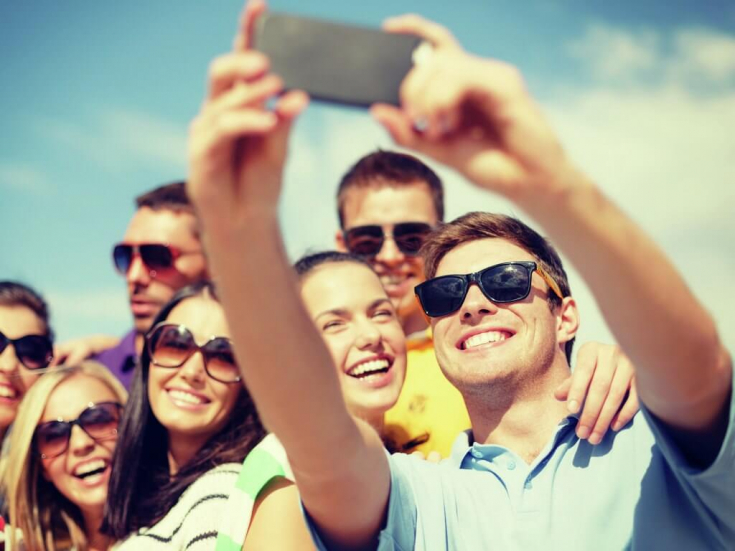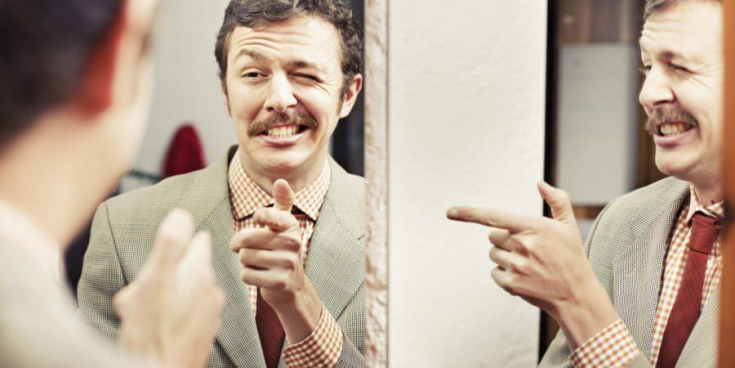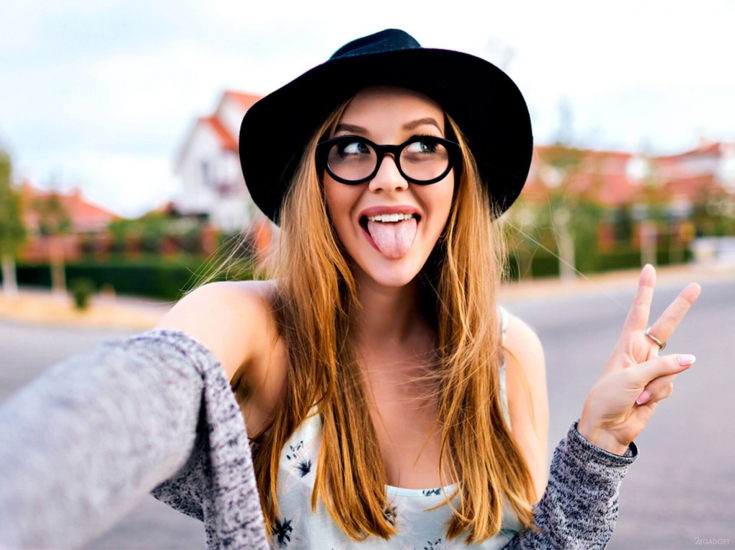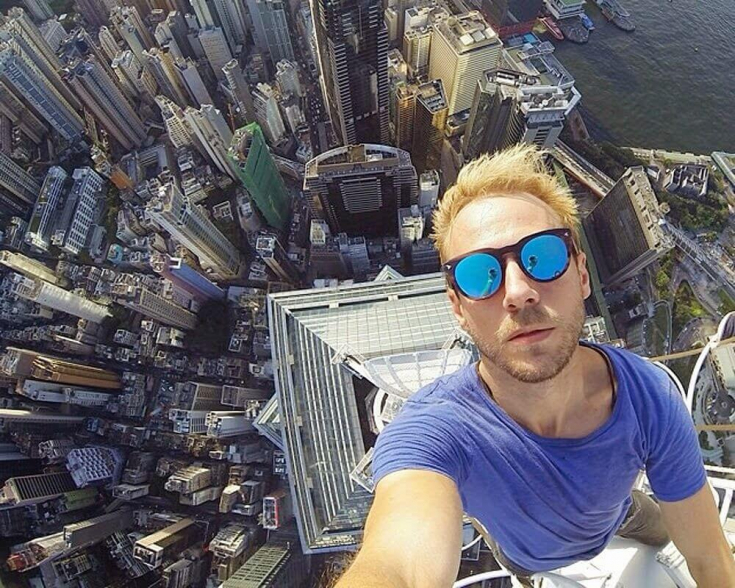Selfie is taking a photo of yourself in some process (buying clothes, walking, traveling, eating) and then posting the photo on social networks in order to get a public assessment and a veiled confession. The term "Selfie" was chosen in 2012 by Time magazine as one of the terms for this year's trend.
Problems with "likes", "hearts", "retweets" occur after posting a photo because you focus on the comments. We spend time reading, waiting, and (often) hoping for comments or likes that add value to a photo. The editors of estet-portal.com will tell about the psychology of selfies.
- Links of Chains: Selfies, Social Networking and Narcissism
- The contribution of psychology to the use of social networks
- 5 selfie facts you may not know
Links of Chains: Selfies, Social Networking and Narcissism
The self-centeredness associated with selfies that we post daily on Facebook, Twitter, Instagram is expressed as narcissism.
Subscribe to our page on Facebook!
Many users today plan and build their daily life according to a calendar, where it is important to have photos, publications, stories, in order to be accepted, to feel part of the universe, where everyone plays their own role. Social media turns people into narcissists who feed their vanity and self-esteem through photos of themselves, but they also hide feelings of inadequacy, low self-esteem.
In fact, excessive expectation of comments, likes often leads to psychological disorders (depression, obsessive-compulsive disorders, dysmorphia).
But how does the narcissist live? Without going into too much detail, the narcissist suffers from a personality disorder that involves a lot of self-care. In the case of social media users accustomed to selfies, we are faced with people who are interested in satisfaction and admiration. Perhaps society has become more narcissistic due to the social media that promoted and fueled this selfie trend. Research has shown that people who post a lot on social media are an insecure personality behind a strong narcissistic component that demands the approval of others.
The influence of selfies on a person

One of the features of daffodils – "not to see others." They tend to dismiss, deny, ignore, or minimize the other person's concern by focusing solely on what is happening to them. Usually, they only respond to their own problems. Their self-esteem is so high that they consider themselves superior to others, ignoring most of the rules. Despite exaggerating their importance, at the moment of negative criticism they are very vulnerable and tend to blame others, but only not themselves.
The contribution of psychology to the use of social networks
In cases where a person is compulsively taking a selfie and there is indeed a visible disorder, psychologists offer certain treatments that may help the person identify the problem and be able to resolve it. Recent research has focused on finding the connection between personality and selfies, as a result, people who post more selfies on their social media have narcissistic and antisocial personality traits.
Subscribe to our page on Instagram!

On the other hand, the way a selfie is taken can express other personality traits of a person, such as whether they are more or less sociable, responsible, kind. You can summarize it like this:
- Compassionate, helpful and friendly people look smiling and cheerful in their photos.
- Kind people take selfies from below.
- Hiding the location of a place in a photograph may indicate that the person is concerned about their privacy.
- "Lips in a bow" characteristic of insecure, anxious and jealous people.
- The more sincerity in the photo, the more
emotional positive. 5 selfie facts you probably don't know about
Francesco Bonami, a well-known critic of contemporary art, argues that it is no coincidence that the word selfie is similar to selfish, which in English means selfish. If the artists of the past tried to paint self-portraits, I explore the innermost corners of my soul, but today the only thing we do – posing in front of the screen and looking for the best face filter with the function of eliminating dark circles under the eyes, after yesterday.
2. Canons of BeautyIf we think about the concept of youthful beauty, which lives in the moment in the here and now, Oscar Wilde said: "Beauty is the most powerful thing in the world, because it does not need to be explained."
To a large extent, Dorian Gray would be a selfie addict and would have had non-trivial success if he had an Instagram profile.
There is a problem of the race for youth, people do not publish original photos, every frame they like goes through reusable layers of retouching. This distorts the perception of reality. People with certain flaws can make great sacrifices for the perfect photo. It's a fine line between mental and physical health that needs to be managed, especially in teenagers.
3. Selfie Woman

According to statistics, it is women who take more selfies than men. This is because
women are more 4. AppearanceIn most cases,
selfiesare staged, where there is an appropriate image and background. Competition for subscribers and likes pushes a person to create photos with bare body parts, risky locations, and plastic surgery. And ultimately, the aggravation of unsatisfied needs for social approval threatens frustration and depression.
Do an experiment, watch one "selfie" for a while, analyze his photos according to the criteria: appearance, image, makeup, locations, mood and tone of the filters used. Also pay attention to the number of photos where a person stands natural in front of the camera, a face without makeup, without designer clothes, and so on. There aren't many of them. Curious, right?
5. Cheese!Finally, the selfie is almost always associated with not-so-positive personality connotations, but the main thing here is – don't turn it into a mania and everything will be fine.
Most selfies are taken when the person is in a good mood. Since the habit of smiling in photographs is "new"; 20th century (used to be taboo), worth a try, right?
No one would like to remember with a click, a bad or unhappy time. So all's well that ends... on Instagram!

Actually, there is nothing wrong with
selfies. Disagreements arise when there is an excess of them. narcissism is nothing new, the photographs created just show a situation worth paying attention to. People who are obsessed with their image exist and will exist throughout their lives. The solution is to find a reasonable psychological balance in which the image created by selfie does not carry anxiety and a break with real life.
More useful information on our channel in




